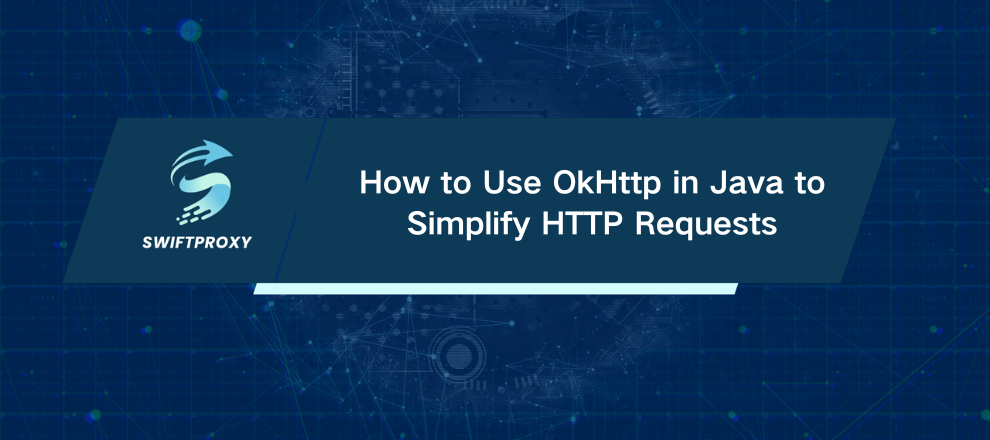How to Use OkHttp in Java to Simplify HTTP Requests

You want speed, reliability, and cleaner code when dealing with HTTP requests. Enter OkHttp—a modern, open-source HTTP client for Java and Android that handles the messy networking stuff so you can focus on logic. It's fast, supports HTTP/2, connection pooling, transparent GZIP compression, caching, and even retries automatically when the network hiccups.
Without OkHttp, sending multiple API requests can be cumbersome and each call can feel like reinventing the wheel. OkHttp makes the process simple, building requests becomes straightforward, responses are easy to manage, and asynchronous calls are handled effortlessly.
What Makes OkHttp Different
Sure, Java has a default HTTP client. But honestly? It's clunky. Adding query parameters or sending a POST request often requires verbose boilerplate code. With OkHttp:
Connections are reused automatically. No more re-authenticating or waiting for slow handshakes.
Async requests? Handled. You can fire off multiple requests simultaneously without blocking your main thread.
Requests built with Request.Builder are clean and readable.
Performance improves dramatically when rotating between proxies or handling multiple sessions.
For instance, if you're scraping websites, OkHttp paired with proxy rotation can save hours of headaches and reduce the risk of being blocked.
Configuring OkHttp in Java
Before sending requests, you need to add OkHttp to your project. Depending on your build tool:
Maven Setup:
Add this to your <dependencies> section in pom.xml:
<dependency>
<groupId>com.squareup.okhttp3</groupId>
<artifactId>okhttp</artifactId>
<version>4.12.0</version>
</dependency>
Gradle Setup:
Add this to dependencies in build.gradle:
implementation 'com.squareup.okhttp3:okhttp:4.12.0'
Sync the project, and you're ready. Easy.
Sending a GET Request With OkHttp
A GET request is simple but powerful. Here's a working example:
import okhttp3.OkHttpClient;
import okhttp3.Request;
import okhttp3.Response;
public class OkHttpGetExample {
public static void main(String[] args) {
OkHttpClient client = new OkHttpClient(); // Create the client
Request request = new Request.Builder()
.url("https://api.example.com/data?user=123andactive=true") // URL with query params
.build();
try {
Response response = client.newCall(request).execute();
System.out.println(response.body().string()); // Print response
} catch (Exception e) {
e.printStackTrace();
}
}
}
Why this works well:
Request.Builder creates a fresh request every time—no leftover settings.
Query parameters are included directly in the URL.
Response bodies are read safely.
Sending a POST Request With JSON
POST requests let you send structured data. Here's a clean example:
import okhttp3.MediaType;
import okhttp3.OkHttpClient;
import okhttp3.Request;
import okhttp3.RequestBody;
import okhttp3.Response;
public class OkHttpPostExample {
public static void main(String[] args) {
OkHttpClient client = new OkHttpClient();
String json = "{\"name\":\"Alice\", \"age\":25}";
RequestBody body = RequestBody.create(json, MediaType.get("application/json"));
Request request = new Request.Builder()
.url("https://api.example.com/users")
.post(body)
.build();
try {
Response response = client.newCall(request).execute();
System.out.println(response.body().string());
} catch (Exception e) {
e.printStackTrace();
}
}
}
Takeaways:
RequestBody wraps your JSON payload.
.post() attaches it to the request.
Reading the response confirms the server received the data.
With these basics, you can expand to include headers, authentication, or even asynchronous calls. You can rotate proxies or implement caching for complex workflows without rewriting your networking code.
Conclusion
If you're serious about Java networking, OkHttp isn't just a convenience—it's a productivity boost. It reduces boilerplate, makes requests cleaner, and handles many errors automatically. You can switch between GET and POST easily, rotate proxies, handle sessions, and scale your network calls efficiently.

















































